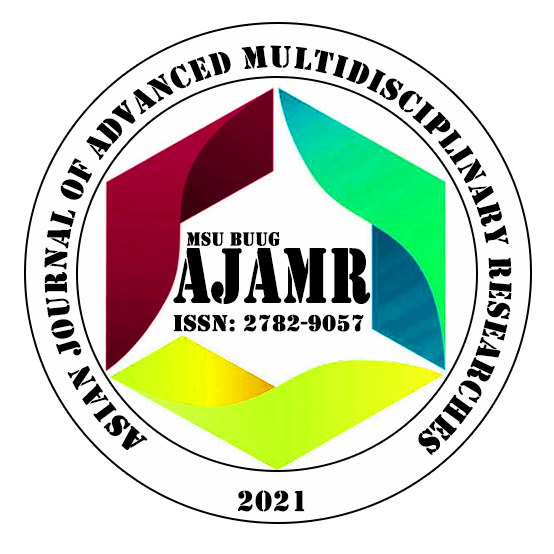

Author: Marvin R. Monteza
Masters of Arts in Education, Graduate Studies, Saint Columban College, Pagadian City, Philippines
Email: marvin.monteza@deped.gov.ph
ABSTRACT
Air pollution can cause damage to human health, be it acute or chronic, that is why it is important that ambient air quality be determined
which does not prove to be easy for common people. This study investigated the potential of three plant species, Dracaena surculosa (Fortune Plant), Cocos nucifera (Coconut), and Musa paradisiaca (Banana) as bioindicators of ambient air quality. Sampling was done in three
different locations in Zamboanga City namely Zamboanga City Medical Center in Sta. Catalina, PHIDCO in Baliwasan, and Environmental
Management Bureau in Pasonanca. Picture of each leaf sample was taken and subjected to Image J program to get the DCA of each leaf.
One-way Analysis of Variance was used to test the significant differences in the mean DCA of each group of leaves in the three research locale and in the mean DCA of each leaf species in the three research locales while pairwise comparison was done using Tukey Post-hoc test
among groups of leaves in each locale and by leaf species. This study revealed that among the three sampling stations Zamboanga City Medical Center in Sta. Catalina has the least DCA of leaves which means that these is the most polluted among three which may be contributed to
pollution in the area caused by too much traffic. It was also found out that among the three plant species tested, Cocos nucifera ha the least
mean DCA which means that it has the highest potential as bioindicator of ambient air quality. More studies may be conducted to validate the
results of this study and to find more bioindicators of air quality.
Keywords: wettability, hydrophilic, hydrophobic, Drop Contact Angle, Zamboanga City.